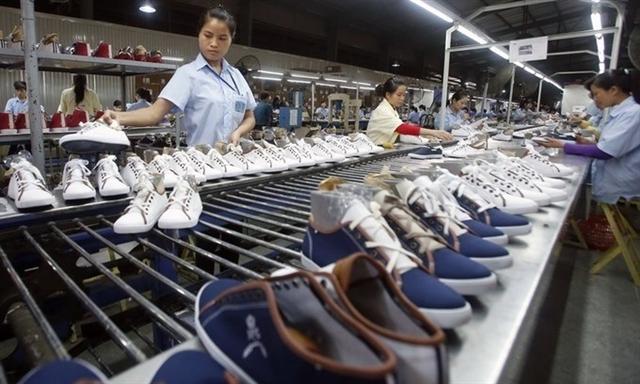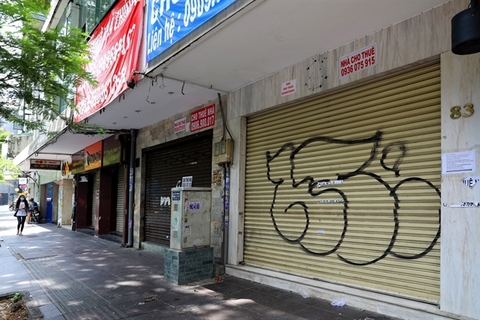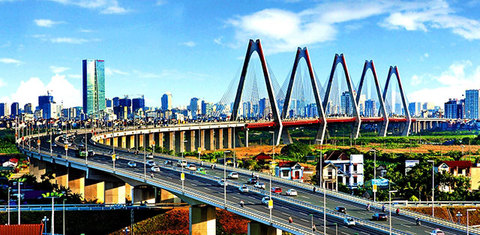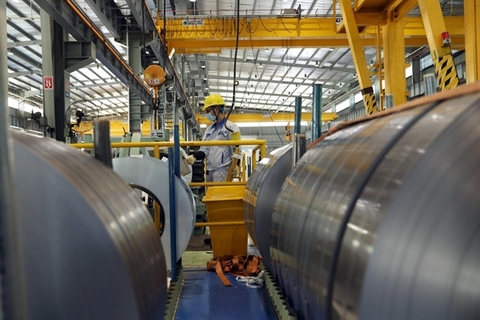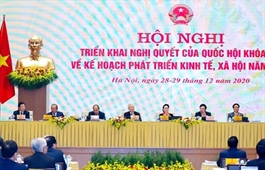Vietnam not to blame for trade deficit: US firms
Vietnam not to blame for trade deficit: US firms
Several American businesses and organizations worry about risks of the U.S. applying tariffs on Vietnam's exports, citing the U.S.'s large trade deficit is not due to currency valuation.
Workers at a footwear factory in Hanoi. Photo by Reuters.
|
In December 2020, the U.S. Trade Representative (USTR) office organized a hearing to gather opinions from U.S. businesses and organizations regarding suspicions that Vietnam's increasing trade surplus with the U.S. was caused by deliberate undervaluation of the Vietnamese dong.
The U.S. Department of Treasury has labeled Vietnam and Switzerland as currency manipulators in a report issued on December 16, though this action on its own would not automatically activate tariffs or sanctions.
The USTR investigation mentioned above, however, would allow the U.S. to unilaterally apply retaliatory tariffs on partners deemed to engage in unfair trade activities.
However, most U.S. businesses and organizations participating in the hearing said the U.S.'s large trade deficit with Vietnam was due to objective factors, not because the Vietnamese dong was devalued.
Alexander Feldman, Chairman, President & CEO of the US-ASEAN Business Council, said one of the reasons for the large trade deficit was due to the U.S.'s export products losing their tariff advantage.
He said the biggest obstacle for U.S. exports is the fact that Vietnam has signed free trade agreements (FTAs) with most countries in the Asia-Pacific alliance. However, the U.S. has pulled out of the Trans-Pacific Partnership (TPP).
Virginia B. Foote, Governor of the American Chamber of Commerce in Vietnam (Amcham), said exporters and importers do not see Vietnam's exchange rate policies as an issue. The U.S., meanwhile, has stepped out of almost all FTAs, while tariffs are an extremely important factor in trade, she added.
Eva Hampl, senior director of the U.S. Council for International Business (USCIB), said her agency was yet to receive any response from members saying currency valuation was one of their concerns.
The council has mostly fielded concerns about the U.S. applying tariffs on Vietnam's exports, she said, adding that no matter how the investigation by the U.S. Treasury and the USTR turns out, applying tariffs was not an appropriate response.
Vanessa P. Sciarra, Vice President for Legal Affairs and Trade & Investment Policy at the National Foreign Trade Council (NFTC), said she was concerned that the use of sanctions could hurt relations between the two countries in the short term, while triggering retaliatory tariffs and negatively affecting U.S. exports to Vietnam.
What can be done
While some businesses expressed suspicion that they could have been hurt by a deliberately undervalued dong and therefore supported tougher measures against Vietnam's exports, the majority of U.S. businesses and organizations at the hearing said the way to reduce the trade deficit was to increase negotiations and sign trade agreements.
The USTR also doesn't need to conduct its own investigation into the matter, but let the U.S. Treasury take care of it, they said.
Matt Priest, President and CEO of the Footwear Distributors and Retailers of America (FDRA), said the U.S. and Vietnam should work together to resolve this issue. He said he hoped that there would be no additional tariffs imposed on shoe products.
Additional tariffs on shoes imported from Vietnam would directly hurt U.S. businesses and consumers, especially amid the coronavirus pandemic, he said. If any tariff imposed on Vietnamese exports to the U.S., the only one to gain an advantage would be China, he added.
If the U.S. administration takes any action that increases costs for U.S. businesses and consumers, businesses would try to return to China to revive production, especially shoes and other footwear, he said, noting that the U.S. doesn't have many choices outside Vietnam and China.
Alexander Feldman hoped the U.S. administration would negotiate with Vietnam to find solutions, and that Vietnam would buy U.S. products on a larger scale, including agricultural ones.
Eva Hampl proposed the U.S. and Vietnam have an FTA, the best way to resolve trade deficit in her opinion.
John Goyer, Southeast Asia executive director of the U.S. Chamber of Commerce, said there was no need for tariff actions. The chamber has proposed that the U.S. administration joins FTAs as a longer-term bilateral trade solution, but the current administration does not pay much attention to FTAs.
Therefore, the chamber feels joining and helping the Trade and Investment Framework Agreement (TIFA) is a more effective step. The agreement would provide an opportunity for Vietnam and the U.S. to resolve their issues effectively.
At the hearing, Can Van Luc, a Vietnamese economist, said there were flaws in the U.S. Treasury and the USTR's calculations regarding their decision to label Vietnam as a currency manipulator.
Countries must at least have a $20 billion bilateral trade surplus with the U.S., foreign currency intervention exceeding 2 percent of GDP and a global current account surplus exceeding 2 percent of GDP to be labeled a manipulator.
Regarding foreign currency intervention, the U.S. Treasury has backed its claims with data from IMF documents, but even the IMF has admitted that these have shortcomings, in particular not mentioning how a country's foreign currency intervention policies could be used for purposes appropriate for its economic conditions, or how increasing foreign currency reserves is necessary to meet medium-term reserve targets, said Luc.
In fact, Vietnam's foreign currency reserves for the last three years have been low, only worth around 3.5 months of imports, which is much lower than some other countries in the region like Thailand (9 months), Singapore (5 months), China (14 months), and the Philippines and South Korea (8 months).
Additionally, Vietnam's exports depend a lot on its imports. If Vietnam wants to export more, it would have to import even more. Its FDI sector has accounted for around 70 percent of total export turnover in the last five years, and around 50 percent of its total import turnover. Because Vietnam's supporting industries are still weak, producing for export requires FDI businesses to import materials irrespective of the currency exchange rate, Luc said.
"Our research has also shown that when the Vietnamese dong's true value drops, exports do not increase as expected, but actually decreases," he added.
Vietnam neither gains an export advantage by manipulating its currency, nor does it engage in such manipulation, he concluded.


